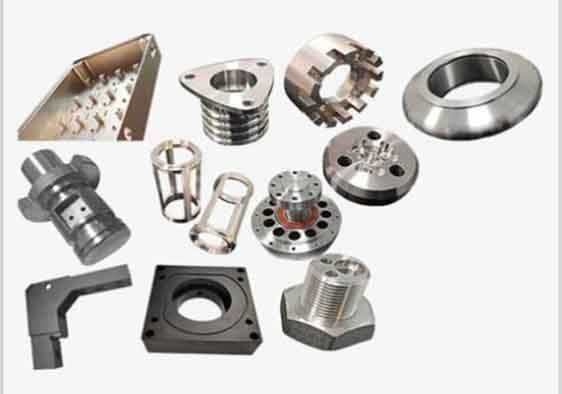What are the Distinctions between CNC Machining and Stamping
Metal processing commonly utilizes two methods: stamping processing and CNC numerical control (CNC) machining. KENENG offers CNC machining, stamping, and injection molding services. This article aims to elucidate the distinctions between CNC machining and stamping, as well as how to differentiate between CNC machining and stamping parts.
Understanding the Definition Difference Between CNC Machining and Stamping:
Stamping Processing:
Stamping processing is a manufacturing technique that utilizes stamping equipment to apply direct deformation force to a sheet within a mold. This process results in parts with specific shapes, sizes, and performance characteristics.
CNC Machining:
CNC machining involves the production of parts with defined dimensions, shapes, and performance attributes through programming control using CNC machining language. It entails regulating the tool's feed speed, spindle speed, tool changes, and various mechanical cutting processes, including turning, milling, planing, grinding, among others.

Differences Between CNC Machining and Stamping:
Production Speed:
CNC machining is comparatively slower in production compared to stamping. When speed is the primary concern, stamping is the preferred choice.
Output:
Stamping is ideal for high-volume production, while CNC machining is more suitable for lower volume production.

Cost:
CNC machining is known for its precision but comes at a higher cost, whereas stamping is relatively cost-effective.
Production Accuracy:
Stamping struggles to achieve complex designs, while CNC machining exhibits higher precision and easily handles intricate designs.
Processing Characteristics:
Characteristics of CNC Machining:
Strong adaptability: CNC machines can process new workpieces with reprogrammed processing programs.
High processing precision: CNC machine tools work with precision, often achieving a pulse equivalent of 0.001mm.
Low labor intensity: CNC equipment carries out tasks automatically, reducing manual labor.
Good economic benefits: CNC machining delivers stable precision, minimizing waste, and ensuring economic efficiency.
Characteristics of Stamping Processing:
High production efficiency: Ordinary presses can perform numerous strokes per minute, achieving one stamping part per stroke.
Stable stamping quality: Molds ensure the size and shape accuracy of stamped parts, with long mold lifespans ensuring consistency.
High strength and rigidity in stamped parts.
Material-saving: metal stamping generates minimal waste and is an eco-friendly processing method.
Distinguishing Between CNC Machining Parts and Stamping Parts:
Stamping parts typically exhibit burrs at notches, leading to less smooth and flat surfaces that can potentially cause cuts when touched.

CNC machining parts, on the other hand, feature smooth and flat surfaces, promoting safety and tactile comfort.
This article outlines the disparities between CNC machining and stamping, along with variations in their resulting products. KENENG specializes in the sale and production of stamping dies and parts, as well as CNC numerical control processing products. These offerings are renowned for their cost-effectiveness and quality, and KENENG is committed to swift delivery and exceptional customer service.
- Art
- Causes
- Crafts
- Dance
- Drinks
- Film
- Fitness
- Food
- Games
- Gardening
- Health
- Home
- Literature
- Music
- Networking
- Other
- Party
- Religion
- Shopping
- Sports
- Theater
- Wellness


